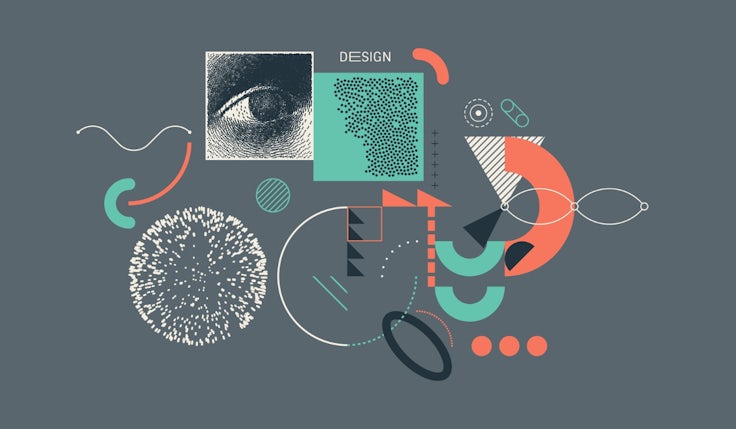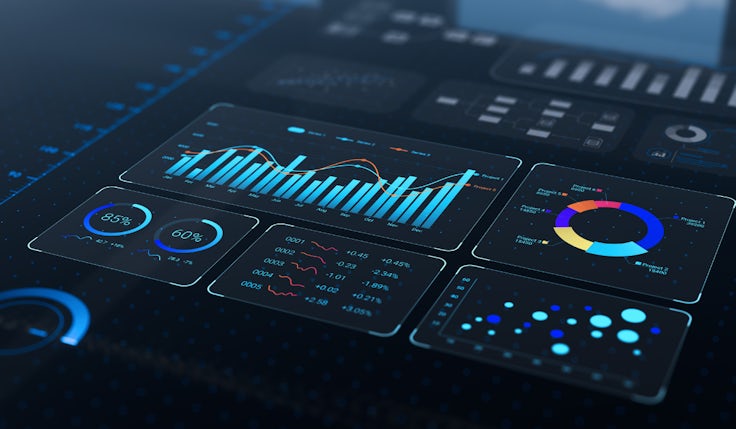‘Eroding trust’: Marketers debate the role for ‘AI-enhanced’ creative
As the use of gen AI becomes widespread, could a mix of “quality, restraint and responsible use” help marketers avoid ethical issues and creative mediocrity?

Only a few short years after it first burst into the mainstream marketing consciousness, generative AI is already transforming the way many brands approach creative work.
From developing early campaign concepts and mocking up trend-driven teasers in as little as 24 hours to customising assets for different markets, the technology is being deployed by brands of all sizes, across all sectors, as a way to enhance and accelerate output.
In fact, according to Marketing Week’s 2025 Language of Effectiveness survey, in partnership with Kantar and Google, over half (57.5%) of marketers are already using AI to generate content and creative ideas for campaigns – the leading use case cited.
Those embracing artificial intelligence cite reduced costs, quicker timelines from idea to execution and even higher engagement levels among customers.
But for all that potential, the role of AI within creative work remains a thorny, sometimes controversial issue. So, how are marketers choosing to use the tech? What benefits are they seeing? And where are they drawing a line between human and machine?
We’re at a tipping point of becoming so saturated in AI content that there are lots of businesses out there that I feel are eroding their trust in the market.
Owain Farrington, Radfield Home Care
For some brands, AI is helping them take the kernels of an idea and turn it into something executable. When Mailchimp’s in-house creative agency Wink was brainstorming early ideas for a 2023 campaign designed to amplify the platform’s role in personalising content for a complex ecosystem of customers, the team turned to AI to help visualise its concept of a ‘clustomer’, explains Jeremy Jones, Wink’s global head of creative.
“We had this idea, but we didn’t have the visual,” he remembers. “We just knew it was this jumbled up mess of customers that marketers were trying to market to.”
The team began using Midjourney to help develop these ideas, working through different prompts and feeding in different reference images until “this interactive living ball of entangled people living and suffering together” came out.
“We did some pre-testing with it, using it as a very high fidelity asset to get real customers’ point of view and they had an amazing reaction to it as well, so we knew we were onto something,” Jones explains.
“And because we were able to speed up that process on the front end so fast, we got to spend more time crafting it on the back end once we got into production.”
80% of CMOs concerned about ‘AI skills gap’
At fashion retailer Zalando meanwhile, the focus is less on the conceptual and more on the role of AI in allowing it to be reactive in its digital marketing. Specifically, the team uses AI to quickly react to local micro trends and cultural shifts, deploying generative AI to design and develop ad teasers or social posts, explains communications manager for technology Daria Kravets.
“We can develop content in under 24 hours using generative AI, compared to traditional photoshoots that could take two or four weeks to organise,” she says.
“That’s why around 70% of our editorial assets and teasers are now AI-enhanced.”
Speed and reactivity isn’t the only benefit either, Kravets insists, with AI generated teasers driving 10% higher engagement on social media platforms.
Similarly, the team uses AI to contextualise product shots, augmenting white backgrounds or straightforward poses with different postures or settings, placing a model wearing trail shoes into a forest or showcasing a snowboard in the snow, for example. Attempting to showcase the product in real life is a tweak that might not directly impact sales, but can help reduce return rates.
“We even recently developed digital twins. So, we create high fidelity replicas of the model and when we sign the contract the model gives us their consent to use their appearance in different settings,” Kravets explains.
Challenge to agencies
Faster output and fewer resources required to scale up are also part of the draw in sectors with different requirements, such as finance.
“AI tools are enabling us to be more responsive and move faster when it comes to sharing the latest in-house insights and expertise with more of our clients across the world,” says Steve Thomas, head of marketing strategy and global delivery for HSBC global private banking.
“Delivering a higher ROI for the research we conduct and augmenting the capabilities of our team.”
Specifically, the private bank is using AI tools to scale and personalise its marketing content across more geographies and into more languages, he explains.
“We pilot several tools for different use cases with eight&four’s Scholar tool being paramount for scaling and re-formatting our content. This has enabled our signature thought leadership to be available faster to clients in simplified and traditional Chinese, as well as French and German,” Thomas adds.
We still believe that for huge marketing campaigns and important messages, we need to work with people and we do love that human element.
Daria Kravets, Zalando
At renewable energy company SmartestEnergy, the team are testing how various AI tools could assist across content generation and ideation – as well as designing branded assets such as reports and guides – as a way to complement creative work and reduce costs.
Following its rebrand in 2023, SmartestEnergy developed a catalogue of branded graphics, iconography and imagery that AI has enabled the team to put to more expansive use, explains vice-president for global marketing Hayley Thompson.
“There are really good design tools out there now that can essentially take your brand and your written content, and deliver a lovely designed output,” she says. “We’ve been amazed with its interpretation of the brand for everything from reports to guides to collateral.”
In the future, this could even change the ways in which the brand engages with agencies, she adds.
“The biggest benefit has been the fact that we could potentially reduce our agency costs over time by utilising tools like that. At the moment we put out a lot of our design work externally, but with these tools we’re able to interpret everything that we want in-house quicker with the ability to then just tweak the content or the copywriting,” says Thompson.
While SmartestEnergy is not yet at the stage where it has stopped working with agencies, but “maybe that’s the future”, she suggests.
“I feel like we could then start looking at what we do with agencies for that value-add piece where the human touch becomes really important. It will make us evaluate our use of agencies over time and then just really be picky about what we put out and why, and do it for the right reasons, rather than just putting a whole stream of work and having a retainer in place,” Thompson adds.
Much of this current experimentation is being led by employees who are passionate about the potential of the technology.
“We’re leaning on employees that are really interested in just spending the time doing this. They’re looking at it and wanting to find ways to bring it into the business to then utilise. That’s really positive, because those members of the team that maybe aren’t quite so interested then, through examples and through discussion, inherently become more interested,” she explains.
Valuing human creativity
For all the touted benefits of AI’s rapidly expanding role within creative output, there are still limitations to what it can deliver. All the marketers cited flag the fact AI must be complementary to – rather than a replacement for – human intuition and originality.
For Jones, the technology simply isn’t yet at the point where it can replace the realism of real people in ads, for example. That’s why, though AI helped the team conceptualise the ‘clustomer’ and design its key visual, Wink still chose to erect a “giant jungle gym of a sphere that was 12ft tall by 8ft wide” hiring acrobats and contortionists to balance on the structure and bring the concept to life.
“We wanted you to feel the realness of what we did visually and to make it connect,” says Jones.
“AI just hasn’t gotten there yet. You can always still tell that it’s manufactured. That’s why we chose purposely to do it for real, so it had that humanistic quality or that lifelike feeling. AI is really great for backgrounds and replacing things and cars and mechanical objects…but when it comes to the replication of actual humans, the connection’s not as real or as strong.”
For much the same reason Zalando still opts for human models in larger editorial campaigns, explains Kravets.
[With AI] I feel like we could then start looking at what we do with agencies for that value-add piece where the human touch becomes really important.
Hayley Thompson, SmartestEnergy
“We still value human creativity and human connection, and we still love a photoshoot when people actually connect and create something really innovative. We still believe that for huge marketing campaigns and important messages, we need to work with people and we do love that human element,” she adds.
In some sectors, these sorts of boundaries to AI within creative output are integral to maintaining trust and authenticity with their potential customers.
At home care provider Radfield the team have been exploring AI’s role in marketing for several years. Artificial intelligence is used to suggest localised marketing plans and first drafts of content, with human writers heavily involved in closely checking and editing any copy. Radfield draws the line at AI-generated imagery, unless it’s to make small technical changes to shape or dimensions, explains head of marketing Owain Farrington
“Under no circumstances would we generate an image of a human being,” he says. “All the people in our photography imagery that represent our brand are genuine people, because we are a human-based business. People want to see the faces of our care professionals, of our clients, of our team members. They don’t want to see some AI generated picture of a lady being cared for at home.”
‘Fundamental skills’: Are marketers at risk of ‘falling behind’ in the AI race?
Farrington reiterates the point that in social care, people “only buy off people they trust” and when it comes to home care you want to feel like you’re interacting with a human being.
“Our implementation of AI in areas such as our writing process and how we can use it to generate images hasn’t been about what can we do. It’s more been a focus on quality, restraint and responsible use of that technology,” he explains.
Radfield has other governance rules in place. The business opts to use Gemini as part of its Google Workspace account, “not because it’s the best LLM [large language model]”, but because it’s secure and not trained on a public model.
“We’re at a tipping point of becoming so saturated in AI content that there are lots of businesses out there that I feel are eroding their trust in the market,” Farrington adds.
“When people reach that stage where someone in the family does need home care and they start doing the research, you can’t afford their first interaction with the business to be an AI generated advert they see pop up on Google.”
Jones agrees the growing proliferation of AI within creative content, if left unchecked, could wear thin with audiences.
“The biggest problem is that everyone has access to these tools, so everyone’s going to have access to the same baseline or mediocrity,” he says.
That ultimately means that human creativity “is probably more important than ever”.
Marketing Week will continue its reporting from the Language of Effectiveness research in the coming weeks. Click here to download our report on the data.






